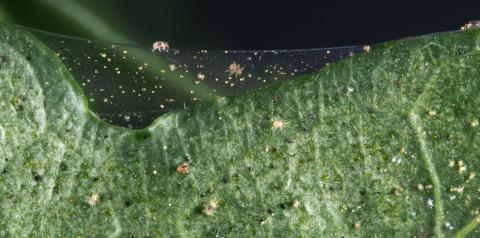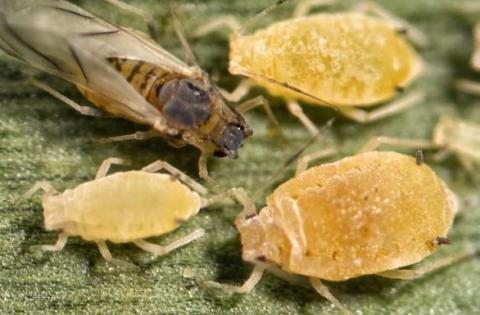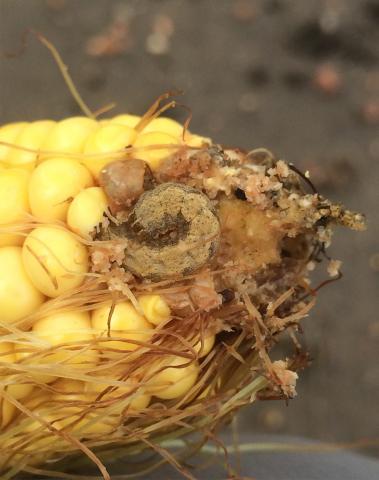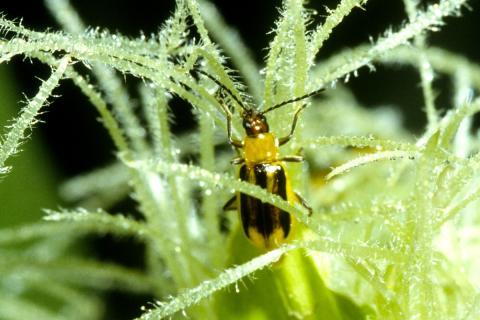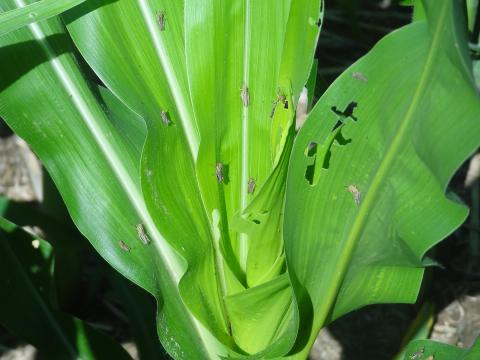Managing Spider Mites in Corn and Soybean
July 26, 2022
Recommendations for managing spider mites in corn and soybean, including treatment thresholds and insecticides, as well as discussions on the potential impact of beneficial insects, diseases and insecticide applications.
Identifying Spider Mite Damage and the Species Responsible
July 26, 2022
With growing reports of spider mites damaging corn and soybeans in Nebraska, it's important to check leaves closely, as many other crop issues can cause similar discoloration.
Watch For Grasshoppers in Crops
August 9, 2016
Growers are reporting grasshoppers in field borders moving into crop fields in parts of Nebraska. Here are the insect treatments to help you determine treatment need.
Be on the Lookout for Sugarcane Aphids on Sorghum
July 29, 2016
Nebraska grain sorghum producers are being advised to be on the lookout for sugarcane aphids. While this pest hasn't been a problem in Nebraska previously, it is in Kansas and moving north. The sugarcane aphid is light yellow to gray in color, with dark cornicles (“tail-pipes”) at the end of the body and dark tarsi (feet). Adult aphids can be winged or wingless.
Begin Scouting for Western Bean Cutworm Eggs in Corn
July 8, 2016
The first western bean cutworm moths were captured in University of Nebraska-Lincoln black light traps June 23 at Clay Center, June 27 at North Platte, and June 30 at Scottsbluff. Flights are currently increasing, particularly in North Platte. Scouting should be underway across much of the state.
Scout for Emerging Western Corn Rootworm Beetles
July 5, 2016
Western corn rootworm beetles began emerging in southeast and south central Nebraska during the last week in June. Beetles typically emerge somewhat later in northeastern and western Nebraska. Scouting should be underway to determine field presence and possible need for treatment.
Japanese Beetles Emerging; Identification Key to Management
July 1, 2016
Japanese beetle adults are beginning to emerge in eastern Nebraska and have been reported feeding in corn and soybean. Here's how to differentiate them from the look-alike sand chafers and treatment thresholds to determine when treatment is recommended.
Scout Field Borders for Grasshoppers
June 30, 2016
Populations of immature grasshoppers are being reported in areas bordering crop fields in several parts of eastern Nebraska. If these grasshopper species are one of the four major species that are likely to infest cropland, control may be warranted. Check here are scouting guide and treatment thresholds and recommendations.

